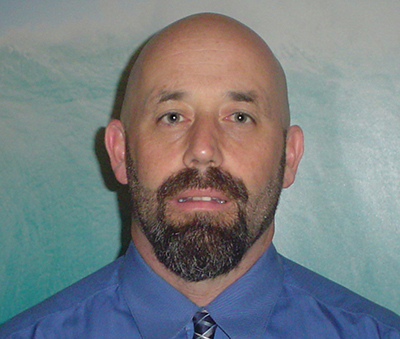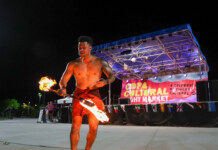By Craig Nolan
What is the role of resistance training in a weight-loss program?
This is a common question that I get asked from students, clients, and colleagues. Many of my former personal training clients would assume that resistance training is only for building muscle and attributed their fat loss to their cardiovascular exercise and diet. They were absolutely correct in the importance of a well-balanced diet and its vital role in weight loss. They were incorrect in assuming that resistance training’s only role is building lean muscle tissue. I will discuss several of the beneficial roles of resistance training and its vital impact on weight loss.
Increased Resting Metabolic Rate (RMR)
About 70 percent of the calories that our bodies burn on a daily basis is attributed to the RMR. Many people will generically refer to their RMR as their metabolism. Given the fact that most of the body’s calories are burned at rest, it would make sense to optimize the fat burning capability of our body. Regular resistance training will increase the body’s RMR by increasing our muscle tissue. The more skeletal muscle an individual has the more calories they will burn at rest. This is an important concept to understand since most people are busy and can only devote a limited time to their exercise routine and tend to opt for running, walking, or other forms of cardiovascular exercise.
Excess Post Exercise Oxygen Consumption (EPOC)
Upon the completion of engaging in exercise our bodies continue to burn calories. This caloric burn is termed the excess post exercise oxygen consumption (EPOC). Research studies have shown that the more intense the exercise is the higher the EPOC will be. Why is this important for weight loss? The more calories an individual burns upon the completion of exercise the higher the caloric deficit will be. As we all know a successful weight loss program must be attained by a negative energy balance. The calories taken in must not exceed the calories burned.
Many research articles show that moderate to high intensity resistance training programs are superior to steady state cardiovascular exercise for increasing the body’s EPOC. Steady state cardiovascular exercise does not significantly increase lean muscle mass. An individual only engaging in steady state cardiovascular exercise may lose fat pounds but it will not have significant effects on their RMR, EPOC, or their physique.
Fat oxidation
Fat oxidation is defined as the breaking down of fat as energy. At least two separate studies have studied the effects of resistance training on fat reduction. One of the studies indicated a 62 percent increase in fat oxidation 16 hours post-exercise. Another study showed that after 16 weeks of resistance training fat oxidation had increased 63 percent. The resistance training programs in these studies ranged from high intensity to moderate in design.
Recommendations
There are multiple ways to achieve a negative energy balance which include the following: diet alone, aerobic exercise (running/walking), anaerobic exercise (resistance training/interval training) or a combination of all three. If weight loss and a healthier lifestyle are your primary motivators I would recommend combining all three methods. If an improved physique in conjunction with weight loss are your primary motivators I would highly recommend primarily focusing on resistance training and diet. Resistance training is just as effective if not more effective as cardiovascular exercise in keeping the body in a negative energy balance plus the added benefits of lean muscle mass, decreased fat mass and looking “tight” for the upcoming swim season.
References
Alexander, J. L. (2002). The Role of Resistance Exercise in Weight Loss. Strength and Conditioning journal, 24 (1), 65 – 69.
Contreras, B. (2016, April 10). Strength Training is Fat Loss Training. Retrieved from https://bretcontreras.com/strength-training-is-fat-loss-training/
Craig Nolan is a Maricopa resident and a member of the Exercise Science faculty at Mesa Community College.
















![Shred-A-Thon to take place tomorrow An image of shredded paper. [Pixabay]](https://www.inmaricopa.com/wp-content/uploads/2024/03/shredded-paper-168650_1280-100x70.jpg)
